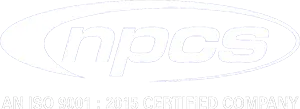Information
Blood Bags - Manufacturing Plant, Detailed Project Report, Profile,Business plan, Industry Trends, Market research, survey, Manufacturing Process, Machinery, Raw Materials, Feasibility study, Investment opportunities, Cost and Revenue
Blood bag is a disposable bio-medical device used for collection, storage, transportation and transfusion of human blood and blood components. The system consists of a single or multiple bag connected with tubings, needle, needle cover, clamp etc. The Blood Bags are made of plastic-material, which are compatible with blood.
The introduction of flexible PVC bags for the storage of blood and its components totally replaced the use of glass bottles because of its numerous advantages. Blood bags enable better separation of blood components in a more sterile manner and safer transfusion of components. This has led to increasingly wider use of blood component therapy than whole blood use, thus enabling more effective use of the scarce donor blood that is available.
Blood Bags can successfully replace the use of glass bottles for collection storage, transportation and transfusion of blood and blood components since bottles require exhaustive cleaning, rinsing and autoclaving procedures and there are chances of breakage at any stage. Further, use of disposable bags eliminates the possibility of any contamination.
Blood bags contain an anticoagulant solution and a red blood cell preservative solution, and are used in blood banks which both collect donor blood and separate blood components. Blood bags are made from imported, medical grade PVC granules & sheets in Class 10000 Clean room environments.
Increase in the healthcare facilities will further act as a driver for the growth of medical devices sector in India. The blood bag market is expected to grow further in the coming years owing to continuous developments and rising demand for better blood collection technology. As a whole it is a good project for new entrepreneurs to invest.
See more
http://www.entrepreneurindia.co/
www.slideshare.net/slideshow/embed_code/key/g438z1UJIlTvZh
Table of Contents
1. City Profile & Geotechnical Site Characterization
1.1. General
1.2. Physical Characteristics
1.3. Map
1.4. Climate &Rainfall
1.5. Culture &Attitudes
1.6. Transportation and Communications
1.7. Economy & Industry
2. Introduction
2.1. Flexible PVC Blood Bags
3. Uses & Application of Blood Bags
4. Properties of Blood Bags
5. Market Survey
5.1. Disposable Blood Bags
5.2. Growth of the Hospital Sector
6. Financials & Comparison of Major Indian Players/Companies
6.1. About Financial Statements Of CMIE Database
6.2. Profits & Appropriations
6.3. Total Liabilities
6.4. Total Assets
6.5. Net Cash Flow From Operating Activities
6.6. Section – I
6.6.1.Name Of Company With Contact Details
6.6.2.Name Of Director(S)
6.6.3.Plant Capacity
6.6.4.Location Of Plant
6.6.5.Name Of Raw Material(S) Consumed With Quantity & Cost
6.7. Section – II
6.7.1.Assets
6.7.2.Cash Flow
6.7.3.Cost As % Ge Of Sales
6.7.4.Forex Transaction
6.7.5.Growth In Assets & Liabilities
6.7.6.Growth In Income & Expenditure
6.7.7.Income & Expenditure
6.7.8.Liabilities
6.7.9.Liquidity Ratios
6.7.10. Profitability Ratio
6.7.11. Profits
6.7.12. Return Ratios
6.7.13. Structure Of Assets & Liabilities (%)
6.7.14. Working Capital & Turnover Ratios
7. Export & Import Statistics Data of India
7.1. Export Statistics Data on Blood Bag
7.2. Import Statistics Data on Blood Bag
8. Raw Material
8.1. Appropriate Quantities
8.2. Properties of Raw Materials
9. Quality of the Raw Materials
10. Blood Bag System
10.1.Product Specifications:
11. Manufacturing Process
11.1.Process :
12. Transportation and Storage Requirements
12.1.Labeling of Blood Units
13. Flow Sheet Diagram
14. Bio-safety & Waste Management in Blood Transfusion
14.1.Example of Waste Generated
14.2.Waste Segregation
15. Buyer’s List
15.1.Contact Details of Buyer’s
15.2.Plant Capacity
15.3.Name of Director(S)
15.4.Company Wise Consumption Detail of the Raw Materials
16. Suppliers of Plant & Machinery
16.1.Complete Machinery Suppliers
17. Suppliers of Raw Material
18. Plant Layout
19. Raw Material, Machinery & Product Photographs
20. Quotation of Plant, Machinery and Equipments from Supplier
PROJECT FINANCIAL
· Project at A Glance
Annexure
· Assumptions for Profitability workings ….…………………………………………....................... 1
· Plant Economics…………………………………………………………………………….................... 2
· Production Schedule……………………………………………………………………….................... 3
· Land & Building…………………………………………………………………………….................... 4
§ Factory Land & Building
§ Site Development Expenses
· Plant & Machinery………………………………………………………………………….................... 5
§ Indigenous Machineries
§ Other Machineries (Miscellaneous, Laboratory etc.)
· Other Fixed Assets………………………………………………………………………….................... 6
§ Furniture & Fixtures
§ Pre-operative and Preliminary Expenses
§ Technical Knowhow
§ Provision of Contingencies
· Working Capital Requirement Per Month………………………………………………................. 7
§ Raw Material
§ Packing Material
§ Lab & ETP Chemical Cost
§ Consumable Store
· Overheads Required Per Month And Per Annum ……………………………………................ .8
§ Utilities & Overheads (Power, Water and Fuel Expenses etc.)
§ Royalty and Other Charges
§ Selling and Distribution Expenses
· Salary and Wages ……………………………………………………………………………................. 9
· Turnover Per Annum ………………………………………………………………………................ 10
· Share Capital…………………………………………………………………………………................ 11
§ Equity Capital
§ Preference Share Capital
• Annexure 1 :: Cost of Project and Means of Finance
• Annexure 2 :: Profitability and Net Cash Accruals
§ Revenue/Income/Realisation
§ Expenses/Cost of Products/Services/Items
§ Gross Profit
§ Financial Charges
§ Total Cost of Sales
§ Net Profit After Taxes
§ Net Cash Accruals
• Annexure 3 :: Assessment of Working Capital requirements
§ Current Assets
§ Gross Working Capital
§ Current Liabilities
§ Net Working Capital
§ Working Note for Calculation of Work-in-process
• Annexure 4 :: Sources and Disposition of Funds
• Annexure 5 :: Projected Balance Sheets
§ ROI (Average of Fixed Assets)
§ RONW (Average of Share Capital)
§ ROI (Average of Total Assets)
• Annexure 6 :: Profitability ratios
§ D.S.C.R
§ Earnings Per Share (EPS)
§ Debt Equity Ratio
• Annexure 7 :: Break-Even Analysis
§ Variable Cost & Expenses
§ Semi-Variable/Semi-Fixed Expenses
§ Profit Volume Ratio (PVR)
§ Fixed Expenses / Cost
§ B.E.P
• Annexure 8 to 11 :: Sensitivity Analysis-Price/Volume
§ Resultant N.P.B.T
§ Resultant D.S.C.R
§ Resultant PV Ratio
§ Resultant DER
§ Resultant ROI
§ Resultant BEP
• Annexure 12 :: Shareholding Pattern and Stake Status
§ Equity Capital
§ Preference Share Capital
• Annexure 13 :: Quantitative Details-Output/Sales/Stocks
§ Determined Capacity P.A of Products/Services
§ Achievable Efficiency/Yield % of Products/Services/Items
§ Net Usable Load/Capacity of Products/Services/Items
§ Expected Sales/ Revenue/ Income of Products/ Services/ Items
• Annexure 14 :: Product wise domestic Sales Realisation
• Annexure 15 :: Total Raw Material Cost
• Annexure 16 :: Raw Material Cost per unit
• Annexure 17 :: Total Lab & ETP Chemical Cost
• Annexure 18 :: Consumables, Store etc.
• Annexure 19 :: Packing Material Cost
• Annexure 20 :: Packing Material Cost Per Unit
• Annexure 21 :: Employees Expenses
• Annexure 22 :: Fuel Expenses
• Annexure 23 :: Power/Electricity Expenses
• Annexure 24 :: Royalty & Other Charges
• Annexure 25 :: Repairs & Maintenance Expenses
• Annexure 26 :: Other Manufacturing Expenses
• Annexure 27 :: Administration Expenses
• Annexure 28 :: Selling Expenses
• Annexure 29 :: Depreciation Charges – as per Books (Total)
• Annexure 30 :: Depreciation Charges – as per Books (P & M)
• Annexure 31 :: Depreciation Charges - as per IT Act WDV (Total)
• Annexure 32 :: Depreciation Charges - as per IT Act WDV (P & M)
• Annexure 33 :: Interest and Repayment - Term Loans
• Annexure 34 :: Tax on Profits
• Annexure 35 :: Projected Pay-Back Period And IRR
X
Have a business idea? Let’s make it
happen together-contact us now!




